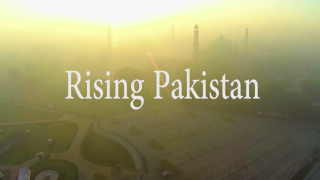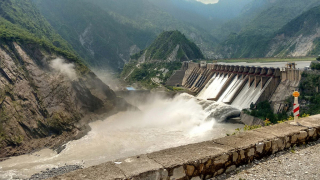IMF bailout consequences for Pakistan
16.05.2019
Debt has become the biggest problem for global south, today. The major share of the budget of these economies are allocated for debt servicing. Hence, it is indispensable for the officials of these nations to look at the hegemonic dimension of debt.
Historically, external debt has played role of double-edged sword. In principle debt enable government to increase its access on finance for development activities, ensure efficient mobilization and allocation of resources in the economy, help in meeting fiscal deficits along with internal debt management, monetary management and short term liquidity management.
But on other side it has created hegemony on the indebted nations. And consequently these nations have been compelled to compromise there national sovereignty. However in post war financial order, IMF and world bank are playing the same hegemonic role by using the label of sustainable economic growth, provision of higher standard of living, poverty reduction and promotion of financial stability, through their structural adjustment programs.
These programs requires cut government spending on education, health and the price subsidies for basic needs. Privatization, Devaluation of national currency, liberalize (open) the financial markets and elimination tariff and other control on the imports. Nevertheless, These policies has come up with distorted problems for emerging economies. These problems enhanced fragility of financial sector, currency crisis, uncertain economic situation and bringing these nations on “Ponzi situation” where the debt become indispensable even for the repayment of interest, as pointed out by H.P Minsky.
Unfortunately like other developing nations, Pakistan has also caught in the snare of the same debt trap. Her debt journey starts from 27 march1952 by signing first ever loan agreement of U.S $27.2 million with World Bank for rehabilitation and development of Pakistan Railway. This created a shortcut way for the every successive ruler which helped to create a debt culture in country and now it has reached at 70% of GDP ratio as compared to 60% in 2008, according to IMF regional economic outlook. Meanwhile, Pakistan has borrowed 21 times from IMF, and almost every government has been dependent on IMF support for fledgling economy, improve foreign exchange reserves and ease balance of payment crisis.
Like previous governments, Incumbent government is also going to take the same step by signing “The reasonable bailout package” to overcome the current economic downturn and to give temporary support to economy. However, negotiation with IMF have stalled twice in the past over various disagreements, such as the exchange rate policy. But now it has going to be concluded. The IMF wants Pakistan to raise her tax to GDP ratio significantly to plug the financial gap, according to Bloomberg.
Experts believe that it will be the highest loan by any Pakistani government in its history from the IMF. Moreover, it will be cause to create other problems i.e. economic, social and political. In economic dimension Firstly, it will dry up foreign exchange and capital in term of large debt service requirement, consequently to meet economic challenges, it will need further loan from other institutions. Secondly, in term of failure or delay in fulfilling the debt service requirement, Pakistan may be included in high credit risk country (as Pakistan’s credit score has already been downgraded from “B” to “B-“ by S&P global rating in February) which will create difficulty to borrow again. Consequently, it will have to pay high interest to have new credit. Thirdly, it will effect on the efficiency of the economy, which will make it more vulnerable for shocks and international financial fluctuation. Moreover, it will increase exchange rate risk in term of further devaluation the national currency and cause increase in inflation. Fourthly, to plug the financial gap government will further raise taxes, cut its expenditure on health, education and other development projects which will further shrink the economy. And finally, all these problems will adversely affect the other sectors of economy i.e. industrial, agriculture and services sector which are already facing serious challenges. It will create pressure on economic growth and will cause more growth volatility.
In political dimension, bailout will increase external (IMF) influence in policy matters which can also be seen in result of step down of Asad Umar, ex finance minister and firing of governor of state bank and in place of him appointing Dr. Baqir as new SBP governor, who had been serving for IMF for the past 16 years. Moreover, due to economic shrinkage it may further increase the conflict among visible and invisible political actors and will further expose invisible actors. This may increase the political uncertainty and instability.
In social dimension, political and economic uncertainty will increase poverty, inequality and other socio-economic problems and will cause to increase the hidden social conflicts which may convert into large social movements. Hence, this situation may increase social uncertainty and lead society toward chaos.
So, Government need to focus on alternative modes to finance its expenditure immediately and after this new economic framework need to develop to get ride of debt trap while considering overall welfare of society and larger interest of country.














